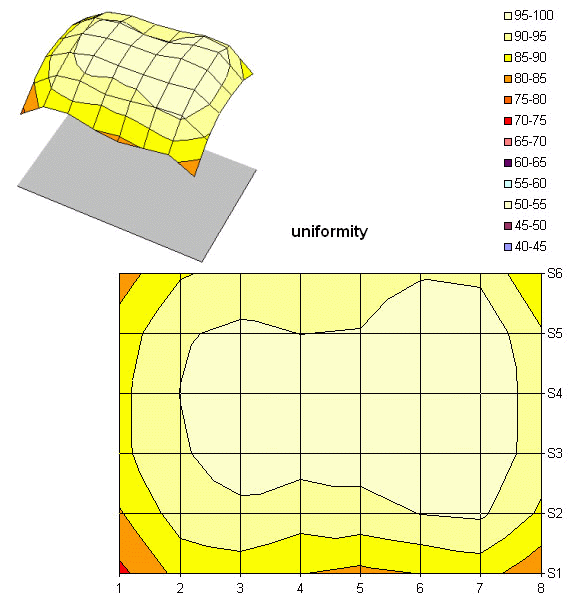All-Pro LCDs Part 2
Spatial Uniformity
We measured the uniformity of the panel's lighting.
For those of you unfamiliar with THG's tests, here is our method:
We set the panel at 50% brightness and 50% contrast and measure the uniformity of the lighting on a white image separated into 64 areas of equal size. The brightest point is considered to be 100%, and the previously measured black value is considered 0%, with the other values obtained distributed between them.
Again the results were excellent. The panel was very uniform, which is important for video applications. We noted very few white areas when displaying dark images.
In short, the Apple Cinema 23" has remarkable static qualities. But photographers will be disappointed with the lack of adjustments. Apple should at least provide a small software application for adjusting the monitor from the computer, because always having to do it using the video driver isn't very practical.
A Diesel Monitor?
We measured Apple Cinema's actual latency:
Get Tom's Hardware's best news and in-depth reviews, straight to your inbox.
Again we'll recall our test method:
The curve shows the latency values for different levels of gray. A black-white alternation is shown on the curve by a point at X-axis 255, a black-gray alternation produces a point at X-axis 125, a black-gray alternation shows as 50, etc.
The official ISO latency rating specified by the manufacturer is only for black/white transitions (0/255). While the value we measured agrees with the manufacturer on this point, it's not of much value in judging the actual responsiveness of the panel in practice.
We're far from the specified 16 ms - the best latency reading we got was 22 ms, with a peak at 29 ms. That's nothing to strut about in front of the competition - far from it. Even rapid transitions were sluggish. Note that Apple uses PWM backlighting, so our measurement was made at 100% brightness.

